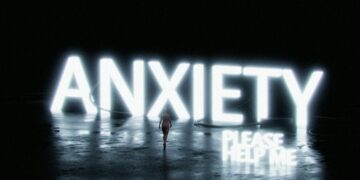Table of Contents
Introduction: The Collapse of the Façade
I remember the day the façade crumbled.
I was standing in a sterile corporate boardroom, the air thick with the ghost of stale coffee and forced optimism, presenting the final report on a multi-year, six-figure diversity initiative I had passionately led.
On paper, we had done everything right.
We had executive buy-in, a robust budget, and a suite of the industry’s “best practice” interventions: unconscious bias workshops, cross-cultural communication seminars, and newly launched employee resource groups.
I had poured over two years of my life into this project, convinced that with enough resources and the right toolkit, we could genuinely move the needle on equity and inclusion.
The report I delivered was a masterclass in putting a brave face on failure.
The quantitative data was bleak—promotion rates for underrepresented employees had barely budged, and in some departments, they had worsened.
But it was the qualitative data that felt like a punch to the gut.
Anonymized quotes from employee surveys spoke not of progress, but of a deep and growing cynicism.
Phrases like “performative,” “a check-the-box exercise,” and “more divisive than helpful” were common.
Instead of fostering belonging, our multi-million-dollar effort had inadvertently amplified resentment, deepened distrust, and left the entire organization feeling more polarized than when we started.
The project wasn’t just a failure; it was a catastrophe that had actively made things worse.
That night, driving home through a blur of streetlights, I felt the full weight of a professional crisis.
This wasn’t just one failed project.
It was a reflection of a pattern I was seeing everywhere.
My experience mirrored a quiet epidemic of burnout and disillusionment sweeping through my field.
The average tenure for a Chief Diversity Officer has plummeted to under three years, with nearly 70% reporting burnout.1
Many of my most talented colleagues were leaving the profession, whispering about the emotional toll of the work, the constant microaggressions, and the gnawing feeling of being an “impostor” or simply “unfit for duty” in a system that seemed designed to resist change.2
We were tasked with monumental change, yet often placed in roles that felt more symbolic than strategic, expected to fix deep-seated issues without the resources or authority to do so.2
This forced me to confront a devastating question: What if everything we’re taught about fixing racial inequality is fundamentally wrong? What if we’re not just using the wrong tools, but misdiagnosing the problem entirely?
The widespread failure of diversity, equity, and inclusion (DEI) initiatives is not merely a sign of poor implementation or a lack of corporate will.
It is a symptom of a profound diagnostic error across the entire field.
For years, we have been treating a structural disease with behavioral medicine.
We entered the field armed with tools designed to change individual hearts and minds—unconscious bias training, dialogues, cultural competency workshops—under the assumption that the problem is a deficit of awareness or interpersonal skill.7
Yet the evidence consistently shows that these interventions have weak, inconsistent, or even negative long-term effects.9
My personal failure was a microcosm of this macro trend.
The burnout so many of us feel is not just from overwork; it is the psychic exhaustion that comes from using a hammer to fix a building’s faulty plumbing, day after day, and being blamed when the leaks continue.
We have been fundamentally misunderstanding what “the work” Is.
Part I: The Flawed Foundation: Why We Keep Repairing Drywall When the Structure is Unsound
For decades, our approach to racial inequality has been akin to a homeowner frantically patching cracks in the drywall, repainting discolored spots, and fixing squeaky floorboards, all while ignoring the fact that the building’s foundation is cracked and its structural beams are unsound.
The fixes are cosmetic, temporary, and ultimately futile because they fail to address the underlying architectural flaws.
This is the story of the conventional DEI toolkit.
The Failure of Awareness-Based Training
The cornerstone of the traditional approach has been awareness-based training, particularly focused on unconscious or implicit bias.
The logic seems sound: if we can make people aware of their hidden biases, they will change their behavior.
Yet, an overwhelming body of research reveals this premise to be deeply flawed.
Hundreds of studies dating back decades have found that while these training sessions can improve knowledge or change attitudes for a day or two, there is little evidence they reduce bias or change behavior in any lasting Way.9
Worse, they can be counterproductive.
When training is mandatory, it can trigger backlash and resistance, leading to an increase in animosity and sometimes even a decrease in management diversity.10
The focus on individual change—the simple admonition to “just be aware of your bias”—has dubious impacts because it fails to account for the powerful systemic and cultural forces that shape and reinforce those biases daily.13
There is often a significant mismatch between the stated goals of training (e.g., creating a more equitable workplace) and the outcomes used to evaluate them (e.g., did participants enjoy the session?), a classic sign of a low-impact intervention.11
The Limits of “Diversity & Inclusion” as a Goal
Our very terminology has often led us astray.
The focus on “diversity” frequently devolves into a quantitative exercise of counting heads, a demographic census that can be achieved without any meaningful shift in power or culture.
An organization can proudly display its diversity statistics while people of color remain concentrated in lower-level roles and absent from leadership, a phenomenon sometimes referred to as a “diverse classroom” that lacks equity.13
This is the trap of tokenism, where the presence of diverse bodies is mistaken for the inclusion of diverse voices.13
Furthermore, the language of “diversity” itself can be problematic.
It often implicitly centers whiteness as the default norm from which other groups “diversify,” obscuring the more fundamental goals of justice, fairness, and equality.10
True inclusion is not about simply being present in the room; it is about having full access, authentic representation, and a genuine share of power in shaping the decisions made in that room.13
Focusing on diversity without first addressing the underlying systems that create inequity is like inviting more people into a house with a tilted floor—it doesn’t fix the fundamental problem and may even make the imbalance more keenly felt.
The “DEI Industrial Complex”
This flawed focus on individual awareness and demographic numbers has spawned a booming “DEI Industrial Complex.” Many programs are marketed not as genuine strategies for systemic change, but as products to mitigate legal risk or manage public relations.
They are often designed to be palatable and non-confrontational, a way to “coddle” dominant groups and avoid the blunt, uncomfortable truths about power and history.10
This approach leads to a proliferation of vague, undefined programs that lack data-anchored definitions for success.
Without clear metrics, these initiatives devolve into a series of experimental, feel-good policies that have no discernible cause-and-effect relationship with actual outcomes, breeding cynicism and distrust among employees who see the disconnect between rhetoric and reality.15
The rapid corporate retreat from the bold DEI commitments made in the wake of George Floyd’s murder in 2020 is a testament to how many of these initiatives were reactive, symbolic, and never deeply integrated into the core strategy of the business.2
These superficial programs do more than just waste time and resources; they actively create organizational antibodies against future, more meaningful change.
They function like an inoculation, introducing a weak or dead version of the change agent (DEI), which allows the organizational system to build resistance and declare itself “immune” to the problem without ever having been truly challenged.
When a low-impact, mandatory unconscious bias training inevitably fails to produce results, or even creates backlash, the organization’s leadership can then justify their resistance to more rigorous, systemic proposals.
They can claim, “We already did diversity training.
It didn’t work.” The performative initiative has not only failed but has also poisoned the well, making the system more resilient to the cure by equating all equity efforts with the flawed, superficial intervention they first experienced.
Part II: The Architect’s Epiphany: Seeing the Building for the First Time
My professional crisis sent me searching for answers far outside my own field.
I buried myself in books on urban planning, sociology, and systems theory, trying to understand how complex systems either thrive or decay.
It was there, in the language of blueprints and load-bearing walls, that I had my epiphany.
I stumbled upon a powerful analogy that didn’t just give me a new answer; it gave me a completely new way to see the problem.
The central paradigm that has reshaped my work is this: Racial inequality is a problem of social architecture.
Our societies, organizations, and communities are not naturally occurring phenomena; they are designed structures.
Like a physical building, they have foundations, load-bearing walls, and internal systems—like plumbing, electrical, and HVAC—that dictate how resources flow, where opportunities are located, and where stresses accumulate.
The persistent racial disparities we observe are not accidental cracks in the plaster or random stains on the carpet.
They are the predictable, logical outcomes of a blueprint that was, from its inception, designed to distribute access, opportunity, and burden unevenly.
This concept is grounded in the principles of systems theory, which posits that our behavior is profoundly influenced by the web of interconnected factors that form the systems we inhabit.17
It also aligns with the social ecological model, which understands that individuals are nested within ever-larger systems—interpersonal relationships, communities, and societal policies—all of which interact and influence one another.18
Just as the architectural design of a city can shape the mindset and opportunities of its residents, the design of our social structures conditions our lives in profound and often invisible ways.20
This reframing was transformative.
It instantly shifted my focus from trying to “fix” the people inside the building to analyzing the building’s blueprint.
The question was no longer “Why are some people struggling to succeed in this environment?” but rather, “How was this environment architected to produce these exact outcomes?” It meant moving from a psychologist’s couch to an architect’s drafting table.
The challenge wasn’t a matter of individual willpower or prejudice, but of structural integrity and design.
Part III: A Structural Survey: Deconstructing Our Racialized Architecture
To truly understand the problem, we must conduct a thorough structural survey of our social architecture, examining it from the bedrock up.
Using this architectural analogy, we can deconstruct the complex, multi-layered nature of systemic racism and see how its different components work together to create the unequal world we inhabit.
1. The Bedrock & Foundation (Historical Policies)
Every structure is built on a foundation, which rests on the bedrock beneath it.
In our social architecture, this foundation is composed of the historical laws and policies whose effects are not confined to the past but are embedded in the very ground of our present reality.
The current racial wealth gap, for instance, is not a recent phenomenon.
It is a direct and predictable outcome of a foundation laid over centuries.
This foundation includes over 200 years of slavery, which treated Black people as property and deprived them of all assets.21
After a brief period of progress during Reconstruction, this was followed by the rise of Jim Crow laws, which were not merely social norms but a codified legal and economic system designed to enforce segregation and systematically prevent wealth accumulation for Black Americans.22
Even seemingly progressive, nation-building policies of the 20th century were foundational elements of this inequitable design.
The original Social Security Act of 1935, a cornerstone of the American safety net, explicitly excluded agricultural and domestic workers—categories that comprised the majority of Black workers at the time.21
The G.I.
Bill, celebrated for creating the American middle class after World War II, was administered in a discriminatory way that largely prevented Black veterans from accessing its transformative housing and education benefits.21
The result of this foundational design is a staggering and persistent wealth gap.
After the Civil War, the white-to-Black per capita wealth gap was approximately 60-to-1.
While it narrowed significantly to 10-to-1 by 1920, progress has largely stagnated since the mid-20th century.
Since the 1980s, the gap has actually begun to widen again, standing at around 6-to-1 in 2020.24
This demonstrates the enduring power of the foundation; the initial conditions were so profoundly unequal that even with the removal of the most overt legal barriers, parity remains a distant dream.
2. The Load-Bearing Walls & Beams (Major Institutions)
Built upon this foundation are the load-bearing walls and beams of our society: the major institutions that uphold the entire structure and distribute “weight”—opportunity, resources, and risk—unevenly.
These are the domains where systemic and structural racism become manifest.
Systemic racism is not about individual racist actors; it is a force pervasively and deeply embedded in the systems, laws, policies, and entrenched practices that produce, condone, and perpetuate the unfair treatment of people of color.14
- The Housing Market: For decades, the federal government and private banks engaged in “redlining,” a practice where neighborhoods were color-coded on maps to designate lending risk, with Black and immigrant neighborhoods marked in red as “hazardous”.26 This policy, along with racially restrictive covenants and other forms of housing segregation, deliberately locked people of color out of the primary engine of middle-class wealth creation: homeownership.21 The legacy of this is a “neighborhood gap”; even today, Black and Latino people with similar incomes to their white counterparts are more likely to live in neighborhoods with concentrated poverty, under-resourced schools, and limited opportunities for upward mobility.21
- The Criminal Justice System: From policing to sentencing, the criminal justice system functions as a powerful load-bearing wall of racial inequity. Data consistently shows that people of color are policed more heavily, arrested at higher rates, and receive harsher sentences than white people for the same offenses.26 This is evident in the “school-to-prison pipeline,” where zero-tolerance policies in schools disproportionately push students of color into the justice system for minor infractions.26 The result is stark racial disparities in incarceration rates that devastate families and communities.
- Economic & Educational Systems: The financial system has historically created obstacles to capital for people of color through discriminatory lending practices.26 In education, the heavy reliance on local property taxes for school funding creates a vicious cycle: segregated, lower-income neighborhoods have a smaller tax base, which leads to under-funded schools, which in turn limits the opportunities for the children in those communities, perpetuating intergenerational inequality.26
3. The Systems & Circuits (Community & Environmental Dynamics)
Within the walls of the structure run the vital systems: the plumbing, electrical wiring, and HVAC that circulate resources, information, and risks.
These are the community and environmental dynamics that make the structural inequalities a lived, daily reality.
They determine the quality of the air you breathe, the safety of the water you drink, and your proximity to both opportunities and hazards.
The data paints a clear picture of how these circuits are racialized.
Due to the legacy of housing segregation, people of color are far more likely to live in neighborhoods with concentrated disadvantage.26
A KFF survey found that Hispanic, Black, Asian, and American Indian and Alaska Native (AIAN) adults are significantly less likely than white adults to feel “very safe” in their neighborhoods and homes.30
This is the circuit of physical safety.
The circuit of environmental quality is similarly skewed; systemic racism manifests in the selective placement of hazardous waste sites, polluting factories, and industrial zones in or near communities of color, a phenomenon known as environmental injustice.26
These circuits deliver tangible and often devastating health consequences.
A vast body of research demonstrates that racial segregation is a fundamental cause of racial disparities in health.31
The chronic stress of living in an unsafe or polluted environment, combined with limited access to quality healthcare, grocery stores, and green spaces, directly contributes to higher rates of chronic diseases and lower life expectancy in communities of color.30
4. The Interior Design & Social Norms (Interpersonal & Cultural Racism)
Finally, we have the interior of the building: the paint on the walls, the furniture, the art, and the unwritten rules of social etiquette.
This is the lived experience within the architecture—the cultural atmosphere that shapes our daily interactions and subtly reinforces who belongs where, who is seen as credible, and whose comfort is prioritized.
This is the realm of interpersonal and cultural racism.
- Implicit Bias: The cultural “air” we all breathe within this structure is saturated with centuries of stereotypes and biased representations. This shapes our implicit biases—the subconscious associations and attitudes that affect our perceptions, actions, and decisions, often without our conscious awareness.7 These biases are not the foundation of the building, but they are a pervasive element of its interior design, influencing everything from hiring decisions to doctor-patient interactions.
- Daily Discrimination: The tangible result of this interior design is the high prevalence of daily acts of discrimination. Surveys reveal that large percentages of Black, Hispanic, AIAN, and Asian adults report frequent experiences of being treated with less courtesy, receiving poorer service in stores and restaurants, being treated as if they are not smart, or being threatened or harassed because of their race or ethnicity.30 These are not isolated incidents; they are the consistent, daily friction produced by navigating a structure not designed for you.
- Intersectionality as a Diagnostic Tool: To fully appreciate the complexity of this interior experience, we must employ the concept of intersectionality. Originally developed by scholar Kimberlé Crenshaw, intersectionality is a framework for understanding how different aspects of a person’s identity—such as race, gender, class, sexuality, and ability—intersect to create unique and compounded experiences of discrimination and privilege.35 A Black woman’s experience of the social architecture is not simply the sum of racism and sexism; it is a distinct experience at the intersection of both.
This concept is more than just a theory of identity; it is the essential diagnostic tool for understanding a system’s structural integrity.
In engineering, a stress analysis reveals where a building’s load-bearing elements converge, as these are the points of greatest pressure and potential failure.
Intersectionality functions as a social stress analysis.
It shows us precisely where the load-bearing walls of power and the weak points of oppression converge, creating points of concentrated stress for individuals with multiple marginalized identities.
Any “renovation” plan that fails to specifically identify and reinforce these intersectional stress points is doomed to fail, as it ignores the most critical structural weaknesses of the entire building.
It moves intersectionality from a descriptive social theory to a prescriptive diagnostic tool for systemic change.
Part IV: The Renovation Blueprint: A Systems-Based Approach to Equitable Design
A structural survey is useless without a blueprint for renovation.
If we are to move beyond patching drywall and begin the real work of re-architecting our society for equity, we need a comprehensive, multi-level plan.
The Social Ecological Model provides an excellent framework for this, allowing us to design interventions that address the problem at every level of the architecture, from the building codes to the behavior of its inhabitants.
The goal is to create a self-reinforcing system where equitable policies, inclusive institutions, and fair interpersonal dynamics all work in concert.
The following table outlines this multi-level approach, translating the architectural analogy into a practical blueprint for action.
It provides a clear, organized structure that organizations and communities can use to audit their current efforts and plan future interventions, ensuring they are addressing the problem at all necessary levels.
Table 1: The Social-Ecological Framework for Racial Equity: A Multi-Level Intervention Blueprint
| Level of Intervention | Architectural Analogy | Core Problem | Goal of Intervention | Evidence-Based Strategies & Examples | |||
| Policy / Structural | Rewriting the Building Codes | Historically and legally codified systems that create and perpetuate racial inequity. | Dismantle discriminatory structures and create new laws and policies that proactively advance racial equity. | – Criminal Justice Reform: End mandatory minimums, reform sentencing guidelines, eliminate cash bail, and invest in alternatives to incarceration.29 | – Housing Justice: Enforce fair housing laws, invest in affordable housing, and implement policies to combat gentrification and displacement.39 | – Economic Equity: Raise the minimum wage, strengthen worker protections, and reform school funding to decouple it from local property taxes.26 | – Health Policy: Declare racism a public health crisis and adopt “racism-conscious” policy frameworks that explicitly aim to reduce health disparities.31 |
| Institutional / Community | Remodeling the Institutions & Redesigning Community Spaces | Organizational and community practices, norms, and resource flows that reinforce structural inequities. | Redesign internal processes, cultures, and community systems to be inclusive, equitable, and data-driven. | – Data-Driven DEI: Use metrics on hiring, promotion, pay, and retention to diagnose specific problems and measure the impact of interventions.15 | – Structured Systems: Implement structured, standardized processes for hiring and promotions to mitigate bias.47 | – Mentoring & Sponsorship: Establish formal programs proven to increase representation in leadership.48 | – Community-Led Initiatives: Support and fund community-based solutions like guaranteed income pilots, community land trusts, and trauma-prevention partnerships.49 |
| Interpersonal | Cultivating New Habits & Norms | Social interactions, communication patterns, and cultural norms that manifest bias and create exclusionary environments. | Foster an environment of psychological safety and build skills for inclusive collaboration and constructive dialogue. | – Skill-Building: Train employees in skills like running inclusive meetings, giving equitable feedback, and practicing “micro-affirmations”.52 | – Allyship & Intervention: Provide training on how to effectively interrupt acts of bias and support colleagues from marginalized groups.53 | – Restorative Practices: Implement restorative justice circles and mediation to address harm and build community trust.54 | |
| Individual | Equipping the Inhabitants | Lack of understanding of systemic issues and the skills needed to navigate and change them. | Develop “systems-aware” individuals who can identify and alter the processes through which inequity is perpetuated. | – Education: Provide ongoing education on the history of structural racism and how it manifests today.53 | – Self-Reflection: Encourage critical self-reflection on one’s own positionality, privilege, and biases.33 | – Empowerment: Equip individuals with the tools and agency to challenge inequitable practices within their sphere of influence.56 |
1. Rewriting the Building Codes (Policy/Structural Level)
The most fundamental work involves changing the laws, regulations, and macro-level policies that serve as our society’s building codes.
These interventions must explicitly address systemic oppression.58
This means advocating for comprehensive reforms in the criminal justice system to reduce racial disparities in policing and sentencing.29
It requires aggressive policy action to advance housing justice and dismantle the legacy of segregation.39
It involves creating economic policies that ensure equitable school funding and fair wages.26
A growing number of cities, counties, and states are taking a crucial first step by officially declaring racism a public health crisis, a move that commits them to re-examining their policies and reallocating resources to dismantle the systems that have reinforced health inequity.31
This work is about creating a “racism-conscious” policy framework that holds all new legislation to a standard of equity.42
2. Remodeling the Institutions & Redesigning Community Spaces (Institutional/Community Level)
At this level, we focus on transforming the organizations and communities that make up the “rooms” and “neighborhoods” of our society.
This is where we must abandon the failed model of one-off diversity training and embrace a more systemic approach to organizational change.
The most effective strategies are not about “fixing people” but about redesigning processes.
This includes implementing structured and evidence-based systems for hiring, evaluation, and promotion that are designed to mitigate the effects of implicit bias.47
It means investing in robust mentorship and sponsorship programs, which have been proven to be far more effective than training at increasing the representation of women and people of color in management.48
It involves empowering Employee Resource Groups (ERGs) to move beyond social functions and become genuine partners in driving policy and culture change.48
Crucially, this work must be data-driven.
A modern, effective approach to equity requires organizations to rigorously collect and analyze data on their own internal systems—hiring funnels, promotion rates, pay scales, and employee retention, all disaggregated by race, gender, and other identities.
This data allows leaders to move from guesswork to precise diagnosis.
As one expert noted, a company might think it has a recruitment problem when the data reveals it actually has a selection bias problem—plenty of diverse candidates are applying, but they are not being selected for interviews.45
This data-driven approach allows for the targeted deployment of resources and provides clear metrics for measuring the impact of interventions.15
3. Cultivating New Habits (Interpersonal & Individual Level)
Within this renovated architecture, we must also equip inhabitants with the skills and norms needed to thrive.
This is not a return to awareness training.
Instead, the focus shifts from simply identifying bias to actively practicing inclusive behaviors and building new interpersonal habits.
It’s the difference between knowing that microaggressions exist and having the skill to practice “micro-affirmations”—small, deliberate acts of inclusion that validate and support colleagues.52
It involves developing cultural intelligence and learning how to run meetings where every voice is heard and valued.63
It means training people on how to be effective allies by constructively interrupting acts of bias when they see them.53
This level is about creating the crucial linkages between individual actions, community health, and systemic change, ensuring that our daily interactions reinforce, rather than undermine, the equitable structure we are trying to build.54
The ultimate goal of this individual-level work is not to create a “bias-free” person—an unrealistic and ultimately ineffective A.M. Biases are deeply ingrained through culture and experience, and the psychological effort to constantly suppress them is exhausting and often fails.33
The true goal is to cultivate a
“systems-aware” individual. This is someone who understands their position within the social architecture and is skilled at identifying and altering the systemic processes through which inequity is perpetuated.
A systems-aware manager, for example, knows that traditional, unstructured interviews are a flawed process that inherently invites bias.47
Instead of trying to be “less biased” within that flawed system, they change the system itself by implementing a structured interview process for their entire team.
This shifts the focus from an unwinnable internal battle against one’s own subconscious to an external, actionable effort to improve processes.
It empowers individuals by giving them concrete, structural levers to pull that have a real impact, rather than asking them to achieve an impossible state of psychological purity.
This is the vital connection between individual agency and durable systemic change.
Conclusion: From Inhabitants to Architects
I recently finished a project with a mid-sized tech company struggling with high attrition among its female engineers of color.
The old me would have proposed a series of workshops on inclusive leadership and a new mentorship program.
The new me, armed with the “Social Architecture” framework, did something different.
Instead of starting with training, my team and I started with a structural survey.
We conducted a deep, data-driven analysis of their entire promotion system, from the criteria for advancement to the composition of review committees to the informal channels through which high-profile projects were assigned.
We discovered that the “blueprint” of their system, while not intentionally discriminatory, was architected in a way that consistently favored employees who fit a very specific, traditional mold.
The process relied heavily on subjective manager evaluations and informal “visibility,” creating structural barriers for those outside the dominant social networks.
We didn’t just present our findings; we co-designed a new system with a diverse group of employees.
We worked together to create a transparent, evidence-based process with clear competencies, structured evaluation rubrics, and a formalized system for allocating developmental opportunities.
We re-architected their promotion process.
A year later, the results were undeniable.
Promotion rates for women of color had increased by nearly 30%, and their attrition rate had dropped to the company average.
We hadn’t run a single workshop on bias.
We had simply changed the blueprint.
This success was the proof of concept I had been searching for.
It confirmed that our greatest challenge—and our greatest opportunity—is to shift our perspective.
The work of achieving racial equity is not primarily about fixing individuals, managing guilt, or assigning blame.
It is about design, engineering, and construction.
It is about having the courage to conduct an honest survey of our collective blueprint and the creativity to draw a new one.
We must stop acting like mere inhabitants of a flawed structure, endlessly patching its cracks and complaining about its leaks.
It is time for us to become the conscious, skilled, and courageous architects of a more just, more equitable, and more beautiful future for everyone.
Works cited
- Burnout Is a Leadership Crisis: Why DEI Leader Well-Being Is the Next Business Imperative, accessed August 8, 2025, https://seramount.com/resources/burnout-is-a-leadership-crisis-why-dei-leader-well-being-is-the-next-business-imperative/
- I Work In Corporate DEI & These Rollbacks Are Personal – Refinery29, accessed August 8, 2025, https://www.refinery29.com/en-us/2025/02/11844303/what-is-dei-black-woman-working-in-diversity-equity-inclusion
- ‘I’m Not Burned Out. I’m No Longer Fit to Work in D&I.’ | ERE, accessed August 8, 2025, https://www.ere.net/articles/im-not-burned-out-im-no-longer-fit-to-work-in-di
- Breaking point: The hidden struggle of burnout amongst DEI leaders – The Honest Talk, accessed August 8, 2025, https://www.thehonesttalk.ca/impact/the-hidden-struggle-of-burnout-amongst-dei-leaders/
- The Emotional Weight of DEI Work and How to Manage It | by Sarah Cordivano – Medium, accessed August 8, 2025, https://medium.com/psychology-of-workplaces/the-emotional-weight-of-dei-work-and-how-to-manage-it-b9e8c69fbbc1
- DEI Backlash Is Making Executive Burnout Worse. Here’s How to Manage It – Chief, accessed August 8, 2025, https://chief.com/articles/dei-backlash-is-making-executive-burnout-worse-heres-how-to-manage-it
- Unconscious bias | Administration and support services – Imperial College London, accessed August 8, 2025, https://www.imperial.ac.uk/equality/resources/unconscious-bias/
- 10 Real-World Diversity Training Examples for Improved Inclusion – Meditopia for Work, accessed August 8, 2025, https://meditopia.com/en/forwork/articles/real-world-diversity-training-examples-for-improved-inclusion
- Does Diversity Training Increase Corporate Diversity … – Frank Dobbin, accessed August 8, 2025, https://dobbin.scholars.harvard.edu/file_url/349
- Are Corporate Diversity Training Classes Complete Bullshit? | Plan …, accessed August 8, 2025, https://planamag.com/are-corporate-diversity-training-classes-complete-bullshit/
- Diversity Training Goals, Limitations, and Promise: A Review of the …, accessed August 8, 2025, https://pmc.ncbi.nlm.nih.gov/articles/PMC8919430/
- DEI Has Failed; We Do Not Need More of It | The Heritage Foundation, accessed August 8, 2025, https://www.heritage.org/education/commentary/dei-has-failed-we-do-not-need-more-it
- What is Racial Equity? – Race Forward, accessed August 8, 2025, https://www.raceforward.org/what-racial-equity-0
- Forms of Racism | Understand and Challenge Systemic Bias, accessed August 8, 2025, https://www.aclrc.com/issues/anti-racism/cared/the-basics-level-1/forms-of-racism/
- The Problem with DEI. Lack of data literacy can turn a good… | by …, accessed August 8, 2025, https://eric-sandosham.medium.com/the-problem-with-dei-cb81d1053543
- The Demonization of DEI: 10 Questions About What Went Wrong and What Happens Next, accessed August 8, 2025, https://fromdayone.com/stories/2025/2/11/the-demonization-of-dei-10-questions-about-what-went-wrong-and-what-happens-next
- Theoretical Approaches in Social Work: Systems Theory, accessed August 8, 2025, https://socialworklicensemap.com/social-work-resources/theories-and-practice-models/systems-theory/
- en.wikipedia.org, accessed August 8, 2025, https://en.wikipedia.org/wiki/Social_ecological_model#:~:text=The%20application%20of%20social%20ecological,support%20expression%20of%20individual’s%20system’s
- About | Health Promotion | Health & Wellness | William & Mary, accessed August 8, 2025, https://www.wm.edu/offices/wellness/ohp/about/sem/
- Architecture of Analogy | On architecture and the city., accessed August 8, 2025, https://cameronmcewan.wordpress.com/
- Racial inequality in the United States – Wikipedia, accessed August 8, 2025, https://en.wikipedia.org/wiki/Racial_inequality_in_the_United_States
- Why history continues to shape racial inequality in the US – CEPR, accessed August 8, 2025, https://cepr.org/voxeu/columns/why-history-continues-shape-racial-inequality-us
- Policy approaches to addressing a history of racial discrimination, accessed August 8, 2025, https://siepr.stanford.edu/publications/policy-brief/policy-approaches-addressing-history-racial-discrimination
- Examining the history of the U.S. racial wealth divide shows …, accessed August 8, 2025, https://equitablegrowth.org/examining-the-history-of-the-u-s-racial-wealth-divide-shows-stagnating-progress-on-closing-these-disparities/
- www.healthaffairs.org, accessed August 8, 2025, https://www.healthaffairs.org/doi/10.1377/hlthaff.2021.01394#:~:text=4-,Systemic%20and%20structural%20racism%20are%20forms%20of%20racism%20that%20are,treatment%20of%20people%20of%20color.
- Systemic And Structural Racism: Definitions, Examples, Health Damages, And Approaches To Dismantling, accessed August 8, 2025, https://www.healthaffairs.org/doi/10.1377/hlthaff.2021.01394
- Racial Discrimination in Contemporary America | CEA | The White House, accessed August 8, 2025, https://bidenwhitehouse.archives.gov/cea/written-materials/2024/07/03/racial-discrimination-in-contemporary-america/
- STRUCTURAL RACISM AND COMMUNITY … – Aspen Institute, accessed August 8, 2025, https://www.aspeninstitute.org/wp-content/uploads/2015/01/aspen_structural_racism2.pdf
- To Reduce Racial Inequality in the Criminal Justice System, Government Should Explore Ways to Reduce Police Stops, Detention, and Long Sentences, Says New Report | National Academies, accessed August 8, 2025, https://www.nationalacademies.org/news/2022/11/to-reduce-racial-inequality-in-the-criminal-justice-system-government-should-explore-ways-to-reduce-police-stops-detention-and-long-sentences-says-new-report
- Survey on Racism, Discrimination and Health – Findings – 10257 | KFF, accessed August 8, 2025, https://www.kff.org/report-section/survey-on-racism-discrimination-and-health-findings/
- Racial Equity – American Public Health Association, accessed August 8, 2025, https://www.apha.org/topics-and-issues/racial-equity
- Factors Associated with Perceived Racial Discrimination While Receiving Medical Care in the United States – MDPI, accessed August 8, 2025, https://www.mdpi.com/2227-9032/13/15/1906
- Implicit Bias – StatPearls – NCBI Bookshelf, accessed August 8, 2025, https://www.ncbi.nlm.nih.gov/books/NBK589697/
- www.ncbi.nlm.nih.gov, accessed August 8, 2025, https://www.ncbi.nlm.nih.gov/books/NBK589697/#:~:text=Implicit%20bias%20includes%20the%20subconscious,and%20imprints%20throughout%20their%20lives.
- Core concepts: Race, ethnicity, and culture | Intro to Ethnic Studies …, accessed August 8, 2025, https://library.fiveable.me/introduction-to-ethnic-studies/unit-1/core-concepts-race-ethnicity-culture/study-guide/hBiYAlDvMsyda8zc
- intersectionality.gwu.edu, accessed August 8, 2025, https://intersectionality.gwu.edu/about#:~:text=Simply%20put%2C%20intersectionality%20is%20the,just%20to%20name%20a%20few.
- Intersectional Identity: Definition, Importance & Impact, accessed August 8, 2025, https://unitedwaynca.org/what-is-intersectionality/
- Racial Justice – End Mass Incarceration Now – The Sentencing Project, accessed August 8, 2025, https://www.sentencingproject.org/issues/racial-justice/
- Advancing Equity and Racial Justice Through the Federal Government | The White House, accessed August 8, 2025, https://bidenwhitehouse.archives.gov/equity/
- Repository of City Racial Equity Policies and Decisions – National League of Cities, accessed August 8, 2025, https://www.nlc.org/resource/repository-of-city-racial-equity-policies-and-decisions/
- Anti-racist interventions to reduce ethnic disparities in healthcare in the UK: an umbrella review and findings from healthcare, education and criminal justice | BMJ Open, accessed August 8, 2025, https://bmjopen.bmj.com/content/14/2/e075711
- Proposing A Racism-Conscious Approach To Policy Making And Health Care Practices, accessed August 8, 2025, https://www.healthaffairs.org/doi/10.1377/hlthaff.2023.00482
- State Policy Can Reduce Systemic Racism in Public Health – ASTHO, accessed August 8, 2025, https://www.astho.org/communications/blog/state-policy-can-reduce-systemic-racism-in-public-health/
- Why DEI data collection drives successful business strategies – Mercer, accessed August 8, 2025, https://www.mercer.com/en-gb/insights/workforce-and-careers/transformation/why-dei-data-collection-drives-successful-diversity-strategies/
- Why Your DE&I Strategy Must Be Driven By Data – Affirmity, accessed August 8, 2025, https://www.affirmity.com/blog/dei-strategy-must-be-data-driven-5-ways-data-driving-seat/
- 12 DEI Metrics You Should Be Tracking in 2025, Plus Examples – Oleeo, accessed August 8, 2025, https://www.oleeo.com/blog/dei-metrics/
- Why Organizations Should Shift Focus from DEI to Decision-Making, accessed August 8, 2025, https://cmr.berkeley.edu/2025/03/why-organizations-should-shift-focus-from-dei-to-decision-making/
- Examples of DEI Initiatives and How to Ensure They Make a …, accessed August 8, 2025, https://chronus.com/blog/dei-initiatives-examples
- Advancing Racial Equity with the American Rescue Plan Act’s Local Fiscal Recovery Funds: Case Studies | PolicyLink, accessed August 8, 2025, https://www.policylink.org/ARPA-equity/case-studies
- Case Studies – HealthEquityGuide.org, accessed August 8, 2025, https://healthequityguide.org/case-studies/
- From Community Engagement to Ownership – Urban Sustainability Directors Network, accessed August 8, 2025, https://www.usdn.org/uploads/cms/documents/community_engagement_to_ownership_-_tools_and_case_studies_final.pdf
- Alternative DEI Approaches to “Blaming and Shaming” – Aperian Global, accessed August 8, 2025, https://aperian.com/blog/blaming-and-shaming-doesnt-work-this-approach-to-dei-does/
- 11 Suggested Actions Towards Anti-Racism – Inclusive Excellence – UC Davis, accessed August 8, 2025, https://diversity.ucdavis.edu/11-suggested-actions-towards-anti-racism
- The HAVI — Racial Equity Statement | Health Alliance For Violence Intervention, accessed August 8, 2025, https://www.thehavi.org/racial-equity-statement
- Racial Justice in Education Framework | NEA – National Education Association, accessed August 8, 2025, https://www.nea.org/resource-library/racial-justice-education-framework
- Interventions to Reduce Racial and Ethnic Disparities in Health Care – PubMed Central, accessed August 8, 2025, https://pmc.ncbi.nlm.nih.gov/articles/PMC2366039/
- Address Systemic Racism and Violence – American Public Health Association, accessed August 8, 2025, https://www.apha.org/policy-and-advocacy/public-health-policy-briefs/policy-database/2023/01/18/address-systemic-racism-and-violence
- Structural Racism Interventions – National Family Planning & Reproductive Health Association, accessed August 8, 2025, https://www.nationalfamilyplanning.org/structural-racism-interventions
- www.amherstma.gov, accessed August 8, 2025, https://www.amherstma.gov/DocumentCenter/View/54782/Principles-for-Promoting-Racial-Equity
- Best DEI Initiatives at Work to Start Implementing Today – Qooper, accessed August 8, 2025, https://www.qooper.io/blog/dei-initiatives-at-work
- Implementing a data-driven approach to achieve measurable DEI progress – HRD Connect, accessed August 8, 2025, https://www.hrdconnect.com/2023/08/08/implementing-a-data-driven-approach-to-achieve-measurable-dei-progress/
- A Strategic Approach To Leveraging Data Metrics For DEI Success – Forbes, accessed August 8, 2025, https://www.forbes.com/councils/forbeshumanresourcescouncil/2024/08/13/a-strategic-approach-to-leveraging-data-metrics-for-dei-success/
- Rethinking DEI: How to Build an Inclusion System That Actually Gets Results, accessed August 8, 2025, https://www.nspe.org/career-growth/pe-magazine/winter-2023/rethinking-dei-how-build-inclusion-system-actually-gets
- Section 3: Connecting racial justice policy and systems change with narrative change | Prevention Institute, accessed August 8, 2025, https://www.preventioninstitute.org/health-equity-practice-module-3-advancing-policy-systems-change-resources/section-3-connecting






